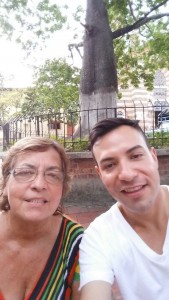After doing this week’s readings there are a few things I’ve learned:
First, I’ve learned that Media can be used as a tool for propaganda and that in order to motivate people into believing in any case, actors of war create social division of ‘us’ against ‘the other’, which leads to labelling individuals and often used at will in discursive devises (‘freedom fighters’ and the ‘Bolivarian dream’). On the other side, many atrocities were committed in the name of independence and we need to bear in mind the losing side: Indigenous people, slaves of African descendants, and other minority groups such as women who were not heart but actively participated in the war. Furthermore, the struggle of independence in Latin America was created in various countries and did not have a unified time-line. Conversely, the independence narratives we hear containing heroic names (such as Simon Bolivar), are directly connected with people’s perception of heroism and weather people considered them to be heroes or not. Hence, in Latin America, ‘criollos’, were at the center of the revolts again the Spanish/Portuguese Empire.
The first document, Simon Bolivar and his “Letter from Jamaica”, contains a message to the duke of Manchester but also a self-reflection of how how Latin American should be organize politically and economically, without the intervention of any empire. His intent is towards forming a ‘Pan-American’ central government in which an authoritarian ruler would control the continental affairs for the good of the liberal majority. From the start, Bolivar knew that, at the time, his dream was a just a dream. However, there are people currently in Latin American who think and wish to maintain Bolivar’s dream alive because the current political arena still doesn’t favour the mass majority of people at the bottom of the social scale. In fact, Bolivar’s letter invites his national counterparts to stop “suffering at the hands of that unnatural mother-Spain”; this evil characterization serves as a rhetoric tool to appeal to the hegemonic control that the Spanish Empire had in many countries in the region. On the other hand, there is a lot of exaggeration (hyperbole) used throughout his letter; for example, “examine as I may the entire history of time and the politics of all nations”. This is, for a lack of words, humanly impossible to do; however, Bolivar’s goal was to appeal knowledgeable to his reader about previous models of governance. Also, there is used of many metaphors such as in “the veil has being asunder”, pointing out that ‘criollos’ now see Spain for what it is: an abusive mother whose main self-interest of insatiable greed was to extract wealth out of her colonies without carrying for her sons and daughters.
Jose Marti’s “Our America”, talk in a very poetic manner to his audience but his intent is very political and wishes to awake a Latin American population whom has been comfortable for way too long. Marti aims to appeal to the power of the ideas and his goal is to cause an appropriation of the land, of being mixed race, which in turn, would reflect the majority of people in post-colonial Latin America and who are not participating or deciding on what is best for them. Furthermore, Marti invites Latin Americans to instruct themselves and to obtain local knowledge from their own communities and stop going to school outside their countries (USA and Europe). Marti also calls for the respect Indians and nature. The government has to be born within the country and run by local countrymen.
Lastly, Hugo Chavez speech at the opening of XII G-15 summit has some very relevant points in the economic, political, and socio-cultural arena of current Latin American. However, I must confess that I do not liked his political agenda and personally I know of many Venezuelan friends who had to fled their country because the situation inside was unbearable. Nonetheless, while I was reading his speech I wanted to know who wrote it because from an International Relations point of view, there were many spot on points which speak to the inequalities of the global division of the North versus the South, technology superiority of USA, economic development and Keynesian Theories of open markets, NAFTA’s negative effects on rural development in Latin America, and lastly, American interventionism and their imperialistic agenda. To sum up, I could go on and on, but generally speaking, I must agree with much of the message of his speak, but the mare idea of agreeing with him makes me want to vomit.
